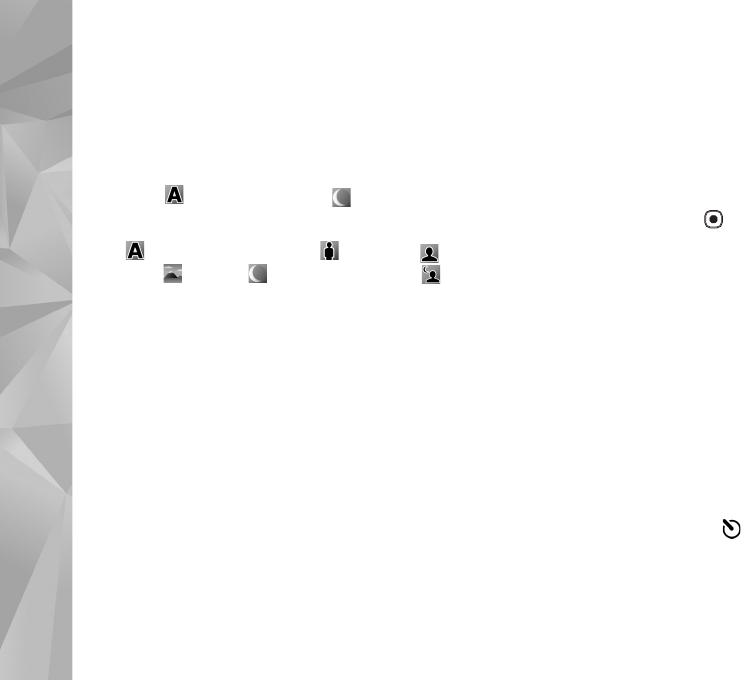
Camera
34
scene have been set according to a certain style or
environment.
Scenes are only available in the main camera.
In the active toolbar, select from the following options:
Video scenes
Automatic ()(default) and Night ()
Image scenes
Auto () (default), User defined (), Portrait (),
Landscape (), Night (), and Night portrait ().
When you take pictures, the default scene is Auto.
To make your own scene suitable for a certain
environment, in the main display, scroll to User defined,
and select Options > Change. In the user defined scene
you can adjust different lighting and color settings. To
copy the settings of another scene, select Based on scene
mode and the desired scene. In the cover display, select
Settings > User scene > Change. To copy the settings of
another scene, select Based on scene.
Take pictures in a sequence
The sequence mode is available only in the main camera.
To set the camera to take six pictures or more in a
sequence (if enough memory available), in the active
toolbar, select Switch to sequence mode. The number of
pictures you can take depends on the available memory.
To take six pictures, press the capture key. To stop taking
pictures, press Cancel. To take more than six pictures, press
and hold the capture key. To stop taking pictures, release
the capture key.
After you take the pictures, they are shown in a grid on the
display. To view a picture, press to open it.
You can also use the sequence mode with the self-timer.
When using the self-timer, the maximum number of
pictures is six.
To return to the sequence mode viewfinder, press the
capture key.
You in the picture—self-timer
The self-timer is available only in the main camera.
Use the self-timer to delay the capture so that you can
include yourself in the picture. To set the self-timer delay,
in the active toolbar, select Self timer > 2 seconds, 10
seconds, or 20 seconds. To activate the self-timer, select
Activate. The self-timer indicator ( ) blinks and the
device beeps when the timer is running. The camera takes
the picture after the selected delay elapses.


















